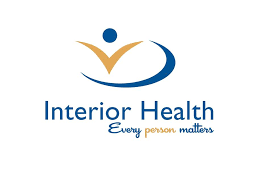At least 10,000 lives lost to illicit drugs since declaration of public health emergency
At least 1,095 British Columbians are believed to have been lost to the toxic drug supply between January and June 2022, according to preliminary data released by the BC Coroners Service.
“The ever-increasing toxicity of the unregulated, illicit drug market is taking a heart-breaking toll on the lives and well-being of members of our communities across the province,” said Lisa Lapointe, chief coroner. “Deaths due to toxic drugs in the first half of 2022 have surpassed the number of deaths experienced in the same period in 2021, putting our province, once again, on track for a record loss of life.”
The number of lives lost to toxic drugs in B.C. between January and June is the highest ever recorded in the first six months of a calendar year. More than three quarters (78%) of the lives lost in 2022 were male and nearly the same percentage (73%) were between the ages of 30-59. On average, more than six lives have been lost to illicit drugs every day this year.
The majority of illicit drug toxicity deaths have been recorded in either the Fraser or Vancouver Coastal Health Authorities (352 and 297 deaths respectively), making up 59% of all such deaths in the first six months of 2022. However, rates of death remain high throughout the province, with Northern Health reporting a rate of death of 53 per 100,000 residents, and four of five health authorities reporting rates above the provincial average (42 deaths per 100,000 residents).
Illicit drug toxicity is the leading cause of unnatural death in British Columbia and is second only to cancers in terms of years of life lost.
“Tragically, in the seventh year of this public heath emergency, as we are experiencing increasing numbers of deaths in July, our province has now lost more than 10,000 lives to illicit drugs since April 2016,” Lapointe said. “These were men, women and youth from all walks of life. They lived in our neighbourhoods, worked in our workplaces and played on our sports teams. Some lived ordinary lives, while others faced enormous challenges. All of them fell prey to the lethal supply of illicit drugs that is omnipresent. As recommended by the subject matter experts on the recent Death Review Panel, it is imperative that we urgently provide access to safer supply across our province. It’s only when we drastically reduce people’s reliance on the profit-driven, illicit drug trade, that we will save lives and turn the trajectory of this crisis around.”
Additional key preliminary findings are below. Data are subject to change as additional toxicology results are received:
- By health service delivery area, in 2022, the highest rates of death have been recorded in Vancouver, Thompson Cariboo, Northern Interior, Northwest and Fraser East.
- By local health area, in 2022, the highest rates of death have been recorded in Lillooet, Mission, Terrace, Cariboo/Chilcotin and Powell River.
- In 2022, 84% of illicit drug toxicity deaths have occurred inside (56% in private residences and 27% in other inside residences including social and supportive housing, single-room occupancies, shelters, and hotels and other indoor locations), while 15% have occurred outside (in vehicles, sidewalks, streets, parks, etc.)
- Analysis of post-mortem toxicology results shows no indication that prescribed safe supply is contributing to illicit drug deaths regionally or provincially.
Jennifer Charlesworth, representative for children and youth –
“Children, youth and young adults in B.C. are being hit hard by the toxic drug supply, both directly and indirectly. In addition to the deaths of young people, children and youth are losing parents, caregivers, family members and friends to the crisis, and each time they do, it has devastating and far-reaching impacts on their lives. This is especially pronounced for First Nations, Métis, Inuit and urban Indigenous young people. Government must prioritize a full array of mental-health and substance-use services for young people, including harm reduction. Nothing short of that will do.”
Guy Felicella, peer clinical advisor, Vancouver Coastal Health, BC Centre on Substance Use –
“Six years ago, nearly 1,000 people in this province died from the illicit drug supply in a single year. Today, the same number of people died in just half the time. The only thing that’s really changed is that the unregulated drug supply has gotten worse. It’s become more dangerous and more unpredictable. Nothing will change if we don’t ensure that people can get the help they need when they need it – whether that’s safe supply or treatment and recovery.”
Leslie McBain, co-founder, Moms Stop the Harm –
“An regulated legal supply that saves lives is not impossible; therefore it is imminently possible.”
Learn More:
Illicit drug overdose death report (data to June 30, 2022):
https://www2.gov.bc.ca/assets/gov/birth-adoption-death-marriage-and-divorce/deaths/coroners-service/statistical/illicit-drug.pdf
Illicit drug toxicity: Type of drug data report (data to June 30, 2022):
https://www2.gov.bc.ca/assets/gov/birth-adoption-death-marriage-and-divorce/deaths/coroners-service/statistical/illicit-drug-type.pdf
BC Coroners Service Death Review Panel: A Review of Illicit Drug Toxicity Deaths: https://www2.gov.bc.ca/assets/gov/birth-adoption-death-marriage-and-divorce/deaths/coroners-service/death-review-panel/review_of_illicit_drug_toxicity_deaths_2022.pdf
Mode of Consumption Data – Knowledge Update:
https://www2.gov.bc.ca/assets/gov/birth-adoption-death-marriage-and-divorce/deaths/coroners-service/statistical/mode-of-consumption.pdf
BC Centre for Disease Control Knowledge update on hydromorphone and illicit drug toxicity deaths:
http://www.bccdc.ca/resource-gallery/Documents/Statistics%20and%20Research/Statistics%20and%20Reports/Overdose/2021.09.15_Knowledge%20Update_Hydromorphone%20and%20drug%20toxicity%20deaths.pdf
Toward the Heart: http://www.towardtheheart.com
Stop Overdose BC: https://www.stopoverdose.gov.bc.ca
BC Centre on Substance Use: http://www.bccsu.ca
Risk mitigation prescribing guidelines in the context of dual public-health emergencies:
https://www.bccsu.ca/wp-content/uploads/2020/04/Risk-Mitigation-in-the-Context-of-Dual-Public-Health-Emergencies-v1.5.pdf
Lifeguard app:
http://www.phsa.ca/about/news-stories/news-releases/2020-news/new-lifeguard-app-launched-to-help-prevent-overdoses
BC Centre for Disease Control overdose response indicators:
http://www.bccdc.ca/health-professionals/data-reports/overdose-response-indicators
BC Centre for Disease Control factsheet on etizolam:
https://towardtheheart.com/assets/uploads/1609802595WXFJCmRP6tu1qI0






















